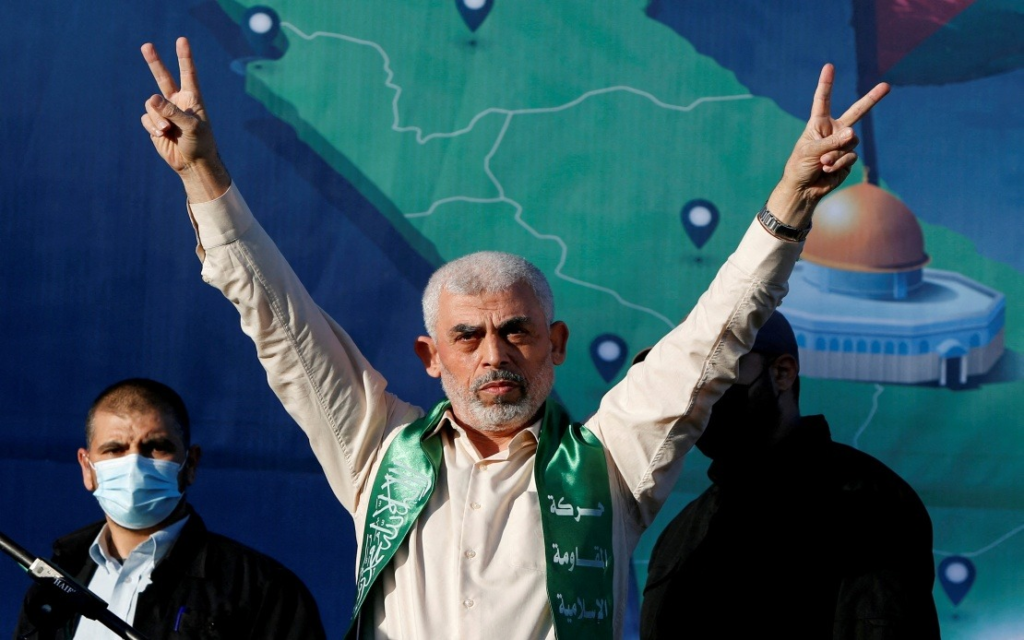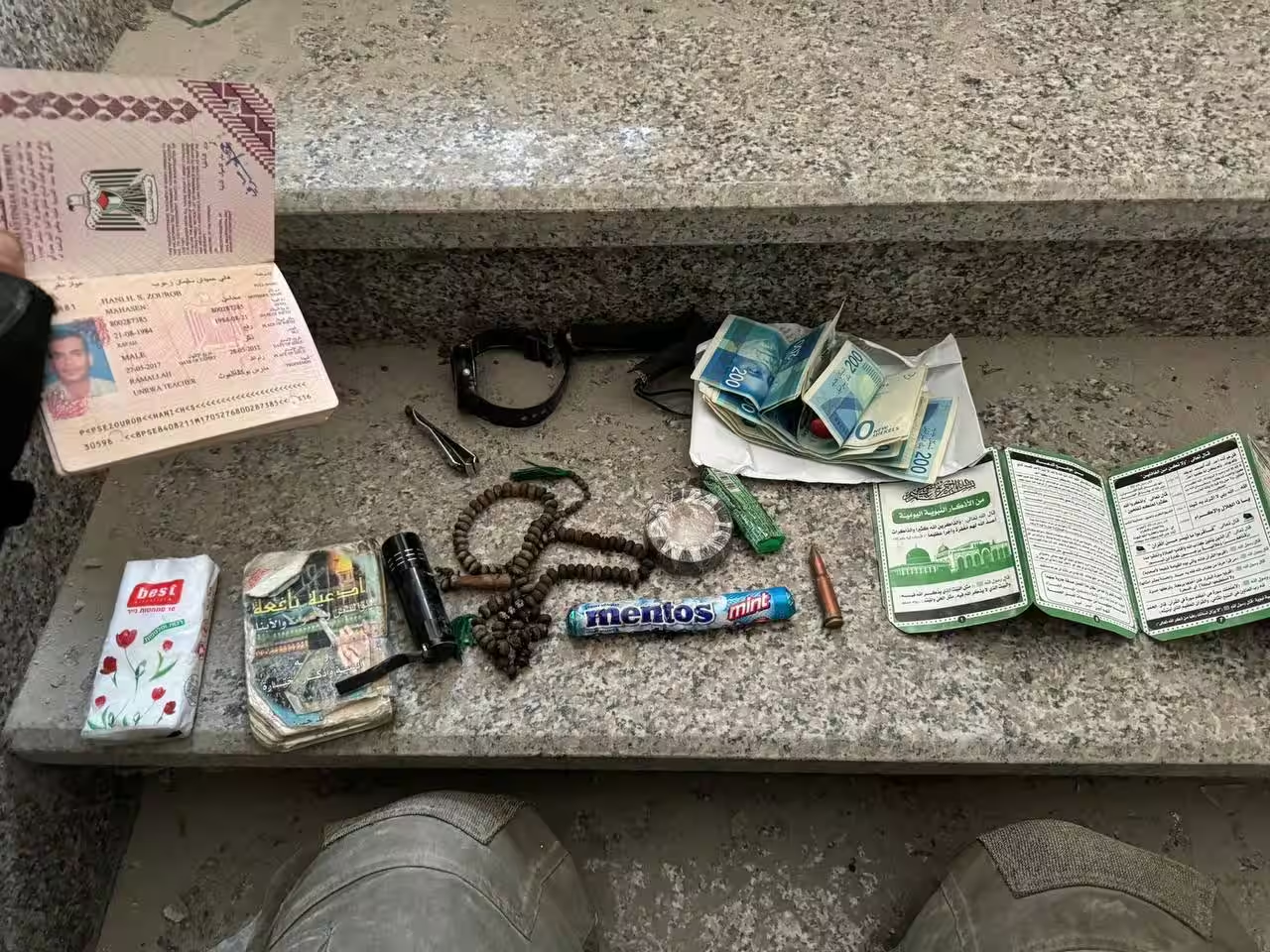In a significant development, the Israeli Defense Forces (IDF) announced the death of Yahya Sinwar, the head of Hamas, during a military operation in Rafah’s Tel Sultan. Alongside his body, several unusual items were discovered, including large amounts of cash, a United Nations Relief and Works Agency (UNRWA) employee ID, weapons, and Mentos candies.
This finding has sent ripples across international media, igniting discussions about the complexities of the Gaza conflict and the significant role Sinwar played within the Hamas organization.
Yahya Sinwar’s Role and Leadership in Hamas
Yahya Sinwar, a man shrouded in both mystery and terror, rose through the ranks of Hamas to become one of its most influential figures. Born in 1962 in the Gaza Strip, Sinwar’s formative years were marked by the harsh realities of displacement, conflict, and occupation.
His family, like many other Palestinian Arabs, had fled during the wars that surrounded the establishment of Israel in 1948. This personal history deeply influenced Sinwar’s worldview and fueled his commitment to Hamas’s hard-line stance against Israel.
Read : Mohammed Deif: Hamas Leader and Mastermind of October 7 Attack on Israel’s Ben Gurion University
Hamas, labeled a terrorist organization by many Western nations, has been engaged in a long-standing conflict with Israel. Under Sinwar’s leadership, the group maintained a strategy of aggression and resistance, marked by sporadic ceasefires that often collapsed into renewed violence.
Read : Hamas Chief Yahya Sinwar’s Brain Cancer Help Israel Identify His Body
Sinwar’s influence within Hamas was immense, and he played a key role in shaping its military and political strategy, particularly after emerging from the shadows following years of incarceration in Israeli prisons.
Sinwar’s leadership was characterized by his ability to maintain control over Gaza’s intricate network of tunnels, which Hamas used to store weapons, evade airstrikes, and conduct operations.
Despite numerous Israeli military campaigns aimed at dismantling Hamas’s capabilities, Sinwar remained elusive, deeply embedded within Gaza’s urban and underground labyrinth. His death marks a critical turning point in the conflict, though it remains to be seen how Hamas will respond to the loss of one of its most powerful leaders.
The Discovery of UNRWA ID, Cash, and Mentos: Symbolism and Controversy
The discovery of Yahya Sinwar’s body came with several puzzling and symbolic items. Most notably, a United Nations Relief and Works Agency (UNRWA) ID was found among his possessions.
This has sparked widespread speculation and controversy. The UNRWA is an agency established by the United Nations to provide support to Palestinian refugees in Gaza, the West Bank, Jordan, Lebanon, and Syria. It plays a vital role in offering educational, health, and social services to millions of Palestinians displaced by the Israeli-Palestinian conflict.

However, the presence of a UNRWA ID card on the body of Hamas’s top leader raises serious questions about the relationship between Hamas and UNRWA. While UNRWA has been repeatedly accused by Israel and some Western nations of indirectly aiding Hamas through its operations in Gaza, the agency itself has vehemently denied these allegations.
The discovery of this ID reignites these debates and may lead to further scrutiny of UNRWA’s role in Gaza and its relationship with the Palestinian political landscape.
In addition to the UNRWA ID, the large amount of cash found with Sinwar suggests the financial resources at his disposal. Hamas has long been suspected of receiving financial backing from foreign entities, and this cash could point to the intricate funding networks that sustain the group’s operations.
Hamas, as an organization, relies heavily on external donations, often funneled through charitable organizations and state actors sympathetic to their cause. The IDF’s discovery of cash, along with weapons, reinforces suspicions about how Hamas maintains its operational capacities amidst the devastation and blockade in Gaza.
Another surprising item found on Sinwar was a pack of Mentos candies. While seemingly trivial, this odd detail has captured the imagination of the media, sparking discussions about the humanizing elements of a figure often portrayed as a cold, calculated militant leader.
The discovery of candies adds a bizarre layer to the narrative, blending the everyday with the violent realities of the ongoing conflict. The juxtaposition of weapons, cash, and something as innocuous as candy on Sinwar’s person highlights the complexities of leadership within militant organizations like Hamas, where ordinary life and warfare are intertwined.
The Impact of Yahya Sinwar’s Death on the Conflict
The elimination of Yahya Sinwar is a significant achievement for the Israeli military, especially in the aftermath of the October 7 massacre that left many Israelis dead and hundreds abducted by Hamas. Sinwar, according to the IDF, was the mastermind behind this attack, orchestrating the violence from his hideout in Gaza.
His death, therefore, represents a critical blow to Hamas’s leadership structure and its ability to conduct coordinated attacks against Israel.
Israeli Prime Minister Benjamin Netanyahu, in a national address, hailed Sinwar’s death as a major victory in Israel’s fight against terrorism. However, Netanyahu also warned that this is just the beginning of a prolonged military campaign to dismantle Hamas.
“Today signifies the beginning of a new chapter following Hamas, but the war is far from over,” Netanyahu said, making it clear that Israel’s military objectives extend far beyond the killing of one key leader.
The elimination of Sinwar is intended to serve as a powerful message to Hamas and other militant groups operating in the region: Israel will not rest until its citizens are safe and the threat from Gaza is neutralized.
However, the broader implications of Sinwar’s death on the conflict remain uncertain. Hamas has always operated as a decentralized organization, with a complex hierarchy that can adapt to the loss of individual leaders.

While Sinwar’s elimination is undoubtedly a psychological and symbolic victory for Israel, it is unlikely to result in the immediate cessation of hostilities. In fact, it could lead to an escalation of violence, as Hamas seeks revenge for the killing of one of its most powerful figures.
Moreover, Sinwar’s death raises questions about the future of the Israeli-Palestinian peace process. Despite numerous attempts at negotiations, both sides have been locked in a cycle of violence, with little hope for a long-lasting resolution.
Sinwar’s hardline approach to the conflict had effectively derailed any attempts at meaningful dialogue, and his death may open up new possibilities for peace. However, the deep-rooted animosities and the complex web of political, religious, and historical factors make any progress towards peace highly tenuous.
Yahya Sinwar leaves behind a legacy of violence, resistance, and unwavering commitment to the Hamas cause. His leadership within the organization has been marked by both tactical successes and devastating losses, but his influence within Gaza and the broader Palestinian resistance movement is undeniable.
His death, while celebrated in Israel, marks the end of a chapter but not the end of the conflict. The discovery of his UNRWA ID, the large sums of cash, and the bizarre presence of Mentos candies alongside weapons only serve to deepen the complexities surrounding Sinwar’s role within Hamas and his connection to the international stage.
As Israel continues its military operations in Gaza and Hamas prepares its next move, the region remains locked in a cycle of violence and retribution. The elimination of Yahya Sinwar is significant, but it is unlikely to bring about any immediate change in the broader dynamics of the Israeli-Palestinian conflict.
The future remains uncertain, as both sides continue to grapple with the profound challenges of peace, security, and justice in a region scarred by decades of conflict.

